
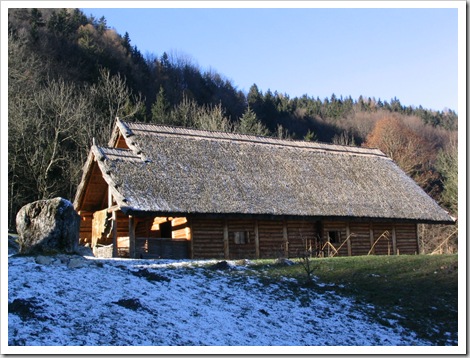
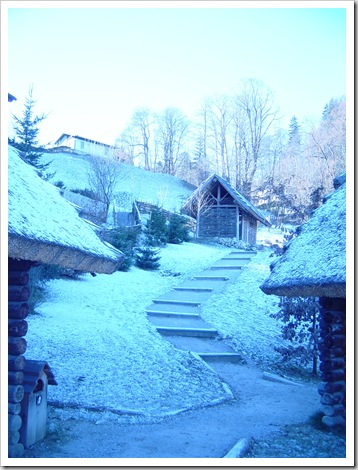
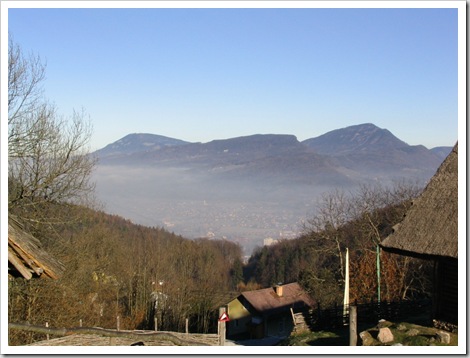

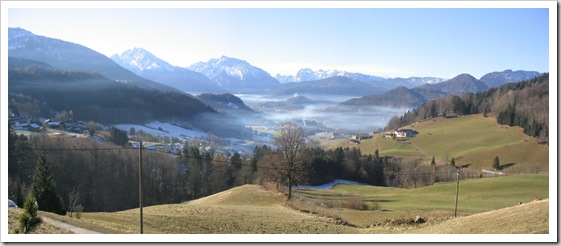

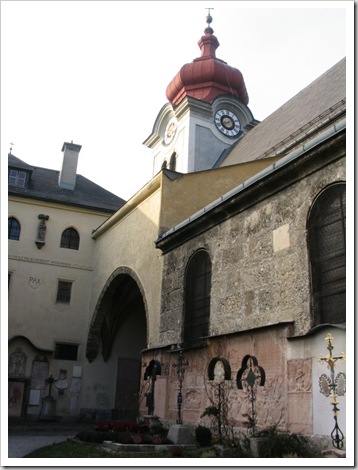



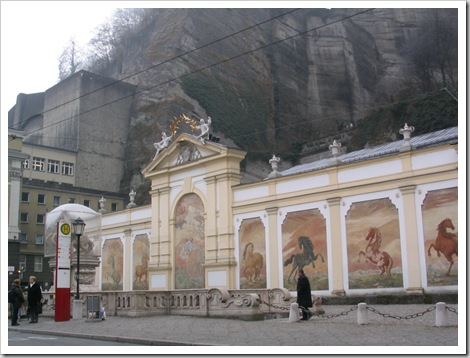
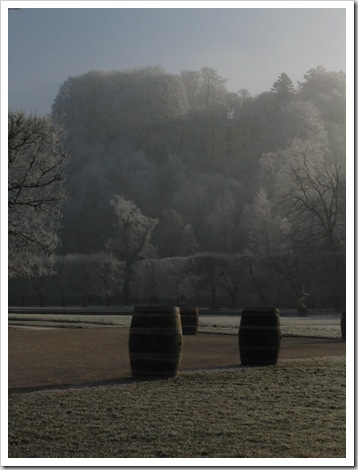
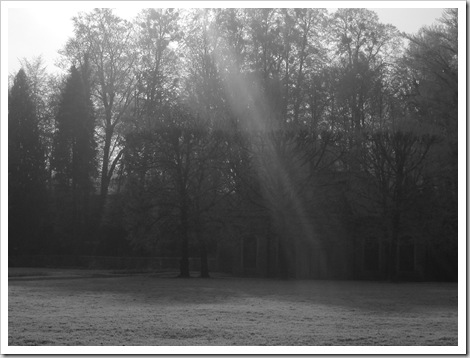


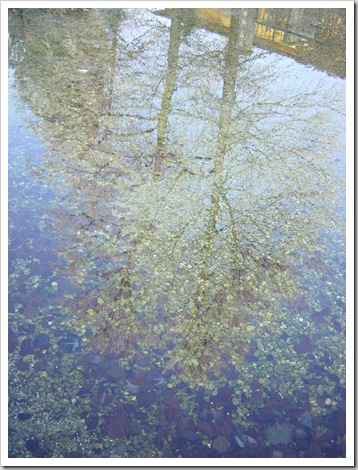







Purple: Rambla de Canaletes
Yellow: Rambla dels Estudis
Blue: Rambla de les Flors
Dark Purple: Rambla dels Caputxins
Orange: Rambla de Santa Monica
The first Rambla, starting from the Place de Catalunya is the Ramble de Canaletes. The name originates from the 19th century Canaleta fountain. The expression ‘he drinks water from Canaletes’ means that person comes from Barcelona. And according to local legend, once you drink from the fountain, you will keep coming back to Barcelona.
 Font de Canaletes
Font de Canaletes
The second Rambla is the Rambla dels Estudis. It is named after the 16th century university, the Estudis Generals. The building was demolished in 1843. Several important buildings are still in this area, among them the 18th century Reial Academia de Ciences i Arts, since 1910 a theater. The building contains the first public clock of the city.
 The next Rambla is the Rambla de Sant Josep, named after a convent which was demolished in the mid 1900s and replaced by the Mercat de Boqueria, a colourful market place. Since this part of the Rambla has many flower stalls, it is now better known as the Rambla de les Flors, or ‘Flower Rambla’. At the end of this part of the Rambla is a small square, the Placa de la Boqueria. It features a mosaic by Joan Miro and a shop decorated with an art deco dragon (below). Used to be an umbrella shop, the owner of the time had some very ornate decorations – see the dragon with fan?
The next Rambla is the Rambla de Sant Josep, named after a convent which was demolished in the mid 1900s and replaced by the Mercat de Boqueria, a colourful market place. Since this part of the Rambla has many flower stalls, it is now better known as the Rambla de les Flors, or ‘Flower Rambla’. At the end of this part of the Rambla is a small square, the Placa de la Boqueria. It features a mosaic by Joan Miro and a shop decorated with an art deco dragon (below). Used to be an umbrella shop, the owner of the time had some very ornate decorations – see the dragon with fan? 

The fourth Rambla counting towards the Columbus Monument is the Rambla dels Caputxins, yet again named after a now demolished building: a Capuchin Monastery. The most interesting building on this rambla is the Gran Theatre del Liceu, a building decorated in modernista style. Fire destroyed Barcelona’s Opera Theatre twice, in 1861 and in 1994, but it was rebuilt each time and most recently reopened in 1999. Further down the rambla on the left hand side is the entrance to the Placa Reial (above), a 19th century lively square with tall palm trees and street lamps designed by Antoni Gaudi. Opposite the Placa Reial in the Carrer Non de la Rambla is the Palau Guell or Guell Palace, one of Gaudi’s first residential buildings. The parabolic shapes at the entrance and the rooftop chimneys (below) are signs of things to come in his later works at the Guell Park and the Casa Mila, just to name 2 of his catalan architect’s most famous works.
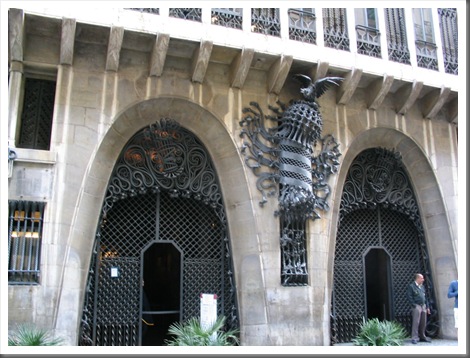
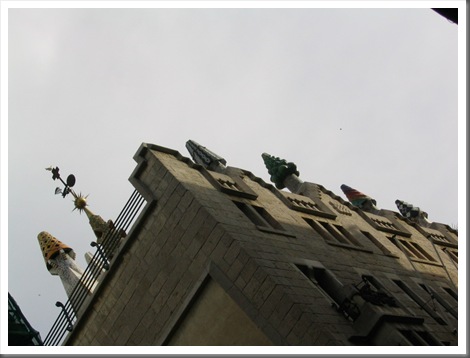 The last Rambla is the Rambla de Santa Monica, named after a convent, now converted into a museum, the Centre d’ Art Santa Monica. The Rambla leads to a roundabout with a 60m large column, the Columbus Monument (below) – built in 1888 for the Universal Exposition.
The last Rambla is the Rambla de Santa Monica, named after a convent, now converted into a museum, the Centre d’ Art Santa Monica. The Rambla leads to a roundabout with a 60m large column, the Columbus Monument (below) – built in 1888 for the Universal Exposition.
 C.Columbus (1888) statue, to commemorate his return to Spain after discovering America.
C.Columbus (1888) statue, to commemorate his return to Spain after discovering America.
 Rambla in olden days
Rambla in olden days
Along La Rambla
 Mercat de la Boqueria, St.Josep, most famous food market in Barcelona
Mercat de la Boqueria, St.Josep, most famous food market in Barcelona
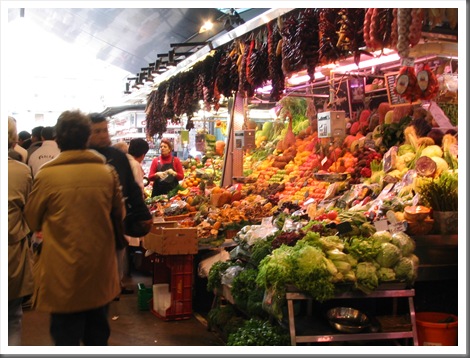
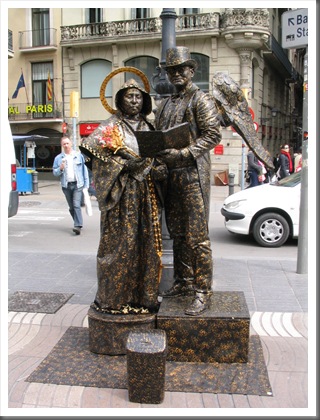 Street entertainers
Street entertainers
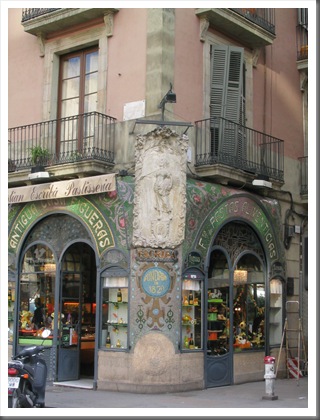 Stop by this magnificent shop which today is a bakery and pastry shop. (In meteor garden II, dao ming si and san chai shared a strawberry cake from this shop)
Stop by this magnificent shop which today is a bakery and pastry shop. (In meteor garden II, dao ming si and san chai shared a strawberry cake from this shop)
Cathedral La Seu it was under refurbishment when I was there so picture above is not taken by me.
it was under refurbishment when I was there so picture above is not taken by me.
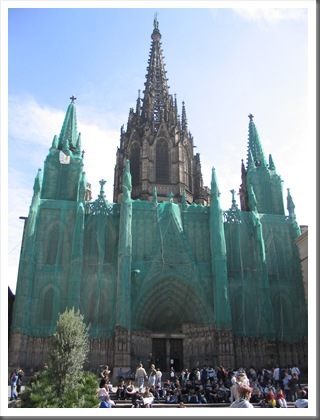

 (interior) wide nave with 28 side chapels
(interior) wide nave with 28 side chapels



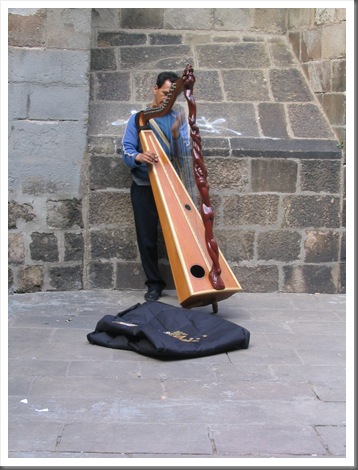
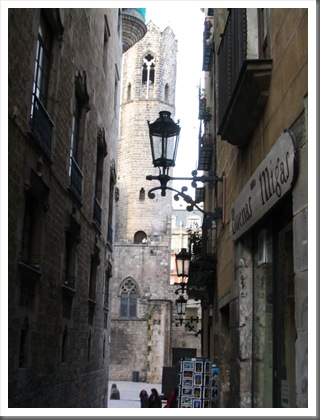

Sagrada Familia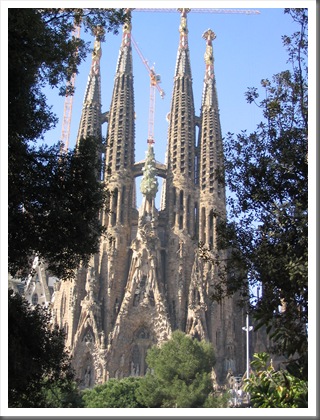
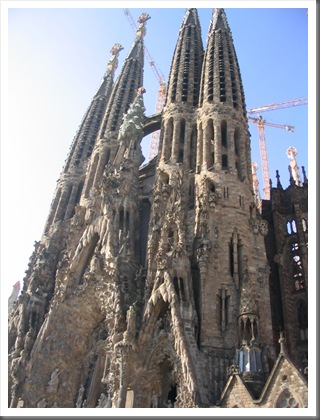
The amazing structure by A.Gaudi. He is really ambitious. Construction started in 1882 and its still incomplete….



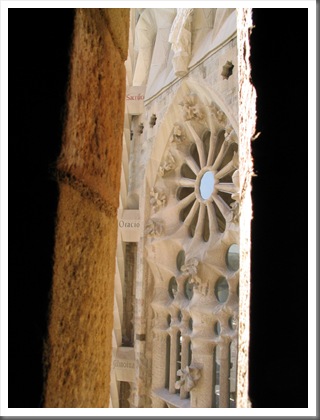


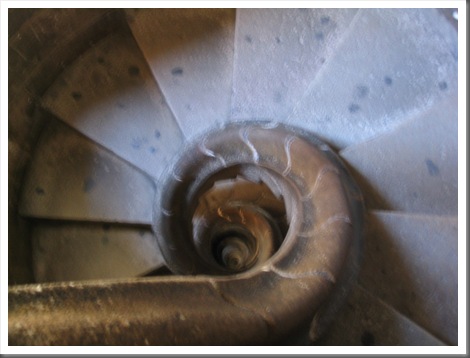 The spiral stairs that I took to the top.
The spiral stairs that I took to the top. 

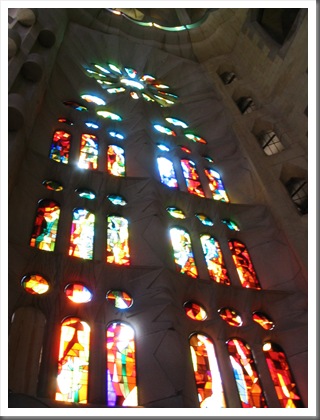

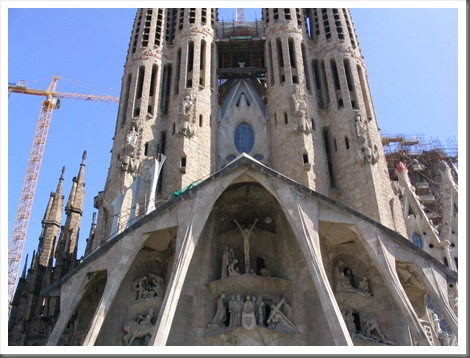
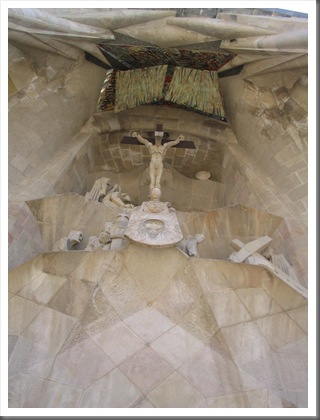

Casa Mila (La Pedrera)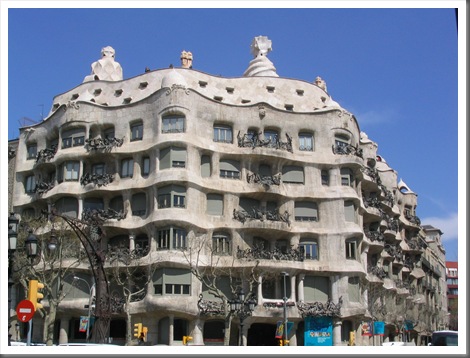
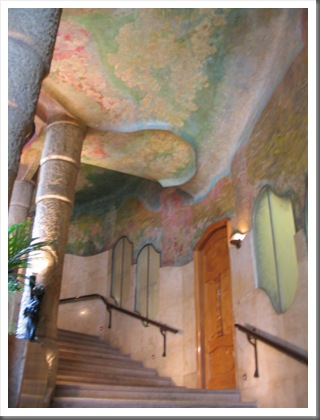
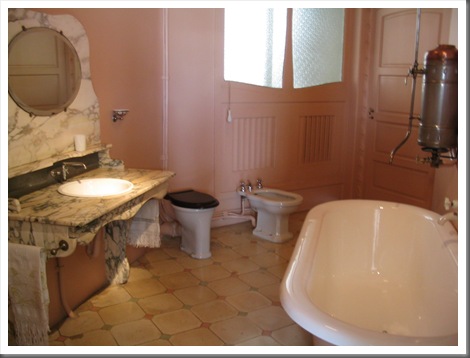



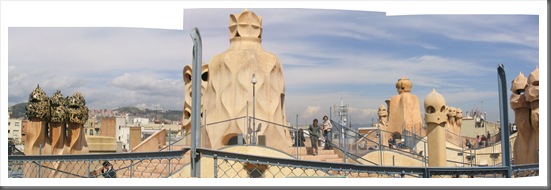 Amazing roof structure…. by Gaudi
Amazing roof structure…. by Gaudi


 Arc de Triumf – close up
Arc de Triumf – close up
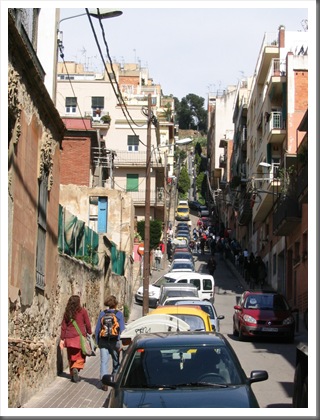


Parc Guell – another work of Antoni Gaudi.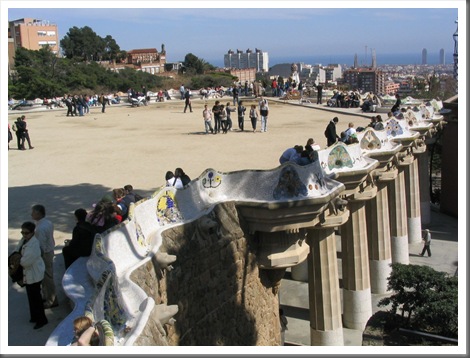
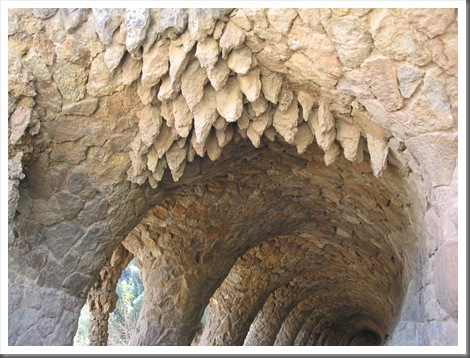

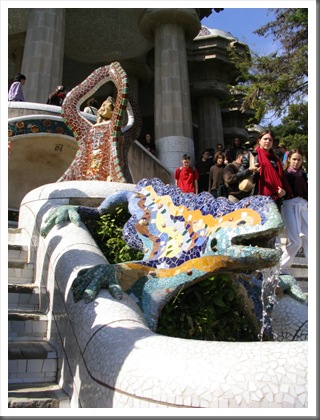

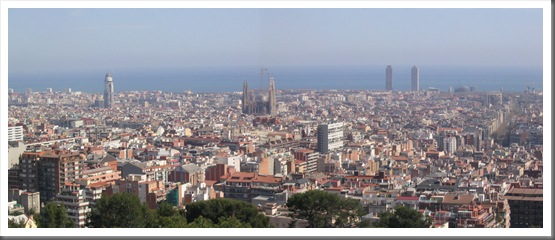
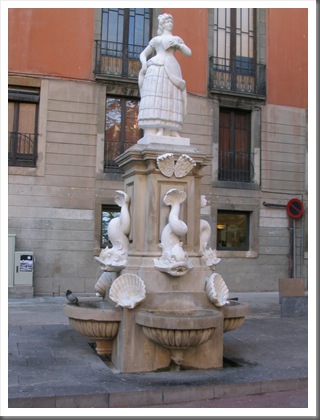
Palau de la Musica Catalunya – concert hall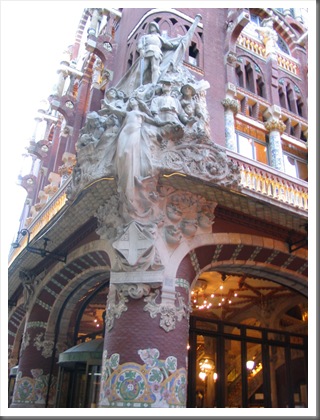
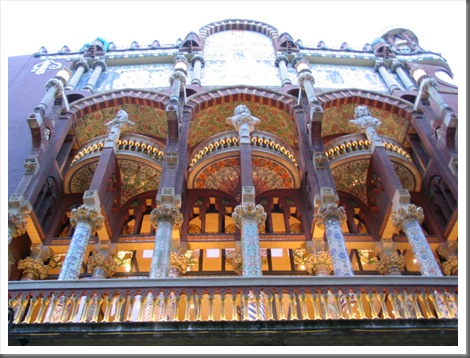
 My last sumptuous dinner in Barcelona with the 2 fab waiters.
My last sumptuous dinner in Barcelona with the 2 fab waiters.